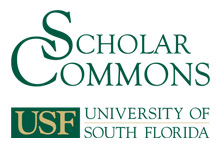Content Language
EN
Abstract
There are two key moments when the Amazon is used as the setting for Brazilian science fiction, both during periods of dictatorship in the twentieth century. The first takes place during the authoritarian government of Getúlio Vargas (1930-1945), the second after the decades-long push for modernization and technological change imposed by the military government from 1964 to 1985. My study shows that, for writers of the first half of the twentieth century, the Amazon is a place of adventure, a setting for stories whose imaginative events ignore the region’s anthropology, history and indigenous cultures. Among the early Brazilian Amazonian adventure fiction novels studied are A filha do Inca (1930) and Kalum (1936), both by modernist Menotti Del Picchia, and two works by science fiction writer Jerônymo Monteiro, O irmão do diabo (1937) and A cidade perdida (1948). In contrast, authors writing between 1983 and 2008 portray dystopian outcomes for the local populations and the environment. I discuss the presence of the monstrous in three such novels: mainstream writer Marcio Souza’s allegorical science fiction novel, A ordem do dia (1983), Ivanir Calado’s tale of dark fantasy Mãe do sonho (1990) and finally Roberto de Sousa Causo’s novella of alien invasion O par (2008). In other words, contemporary authors choose to depict traumatic events and to focus on the symbolism of the Amazon as “virgin territory,” a term that engages the imagery of rape, vampirism, and psychological and bodily invasion, highlighting the consequences of dictatorship and modernization.
DOI
http://dx.doi.org/10.5038/2167-6577.3.1.3
Creative Commons License

This work is licensed under a Creative Commons Attribution-Noncommercial 4.0 License
Recommended Citation
Ginway, M. Elizabeth
(2015)
"The Amazon in Brazilian Speculative Fiction: Utopia and Trauma,"
Alambique. Revista académica de ciencia ficción y fantasía / Jornal acadêmico de ficção científica e fantasía: Vol. 3
:
Iss.
1
, Article 3.
http://dx.doi.org/10.5038/2167-6577.3.1.3
Available at:
https://digitalcommons.usf.edu/alambique/vol3/iss1/3
